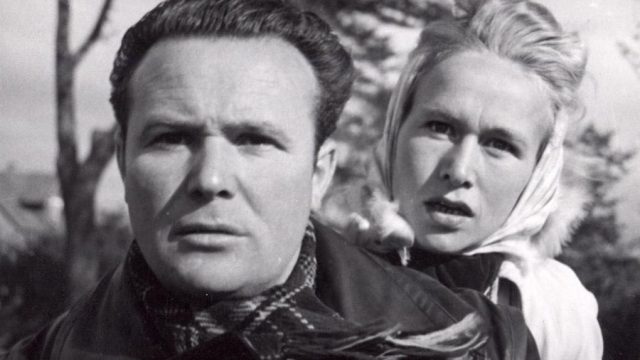They Caught the Ferry (1948) dir. Carl Dreyer
The Passion of Johan of Car?
This was brought to my attention some weeks back and I absolutely cannot find who brought it up, so make sure and take a bow, beloved Soluter!
We’ve covered public service announcements here before. Generally, these are thought of as the province of faceless directors doing utilitarian setups, even though there absolutely have been auteurs who emerged from industrial filmmaking like Robert Altman and George Romero and, to a degree, Herk Harvey. There’s also examples of pedigreed filmmakers dipping into the public service sector. The Coen Brothers directed a series of ads pushing back on the coal industry’s “clean coal” campaign. Frank Capra’s “Why We Fight” series came in the midst of his distinguished Hollywood career. And as in today’s example, Carl Dreyer, who wrote and/or directed ten publicly-funded documentary and educational films during a fallow period before a return to form in 1955 with Ordet.
Dreyer’s The Passion of Joan of Arc is firmly in the rearview mirror. That silent classic wrings almost all of its drama out of emotional performances in closeup. Here Dreyer and his cinematographer Jørgen Roos film make something closely resembling a modern action movie, constructing the story almost entirely out of engine noise and movement. When the leads get a closeup they are stoic as the background whooshes by. After ratcheting the starting-line tension as the motorcyclist impatiently revs his bike, the short is almost all speed, following the bikers as they tear through a town, take a wrong turn, menace drivers, and finally fail to pass a vehicle apparently driven by death himself before an abrupt meeting with a tree. They indeed get on a ferry, just not the one they expected, hope they brought coins. G’night folks! Drive home safely.
What makes this a successful PSA in addition to a crackerjack action sequence is the frequent cuts to the speedometer. This is an action movie trope, a sorta-visual way to express how fast things are going with a simple insert shot. Hurried drivers can relate to the constant check-in with the dial and the math the driver is performing in his unprotected head: if I need to be 70 kilometers away in less than 45 minutes, I have to average around 95 km/hr, over 100 to make up ground from stopping for gas… if your math comes up with these conclusions, please give up on punctuality, folks.
A case of “do as we say, not as we film,” the filmmakers shot from a second speeding motorcycle for much of the action. This resulted in a real crash on set involving the camera vehicle and Roos and his camera were thrown into a field. A concerned Dreyer ran into the field, past his injured crew, and straight to the discarded camera magazine. Dreyer approached the whole safety project from this pragmatic rather than humanist perspective; this account by Roos as recorded by James Leahy in Senses of Cinema points to an even more harrowing possibility:
Dreyer had wanted to film the crash which is the climax of the film with an objective camera, showing the motorbike and sidecar spinning off the road into a tree. To further this ambition, he insisted that the producers write to the Ministry of Justice before he was prepared to start shooting. At that time, there were several people under sentence of death for collaboration with the Germans during the occupation. He wanted two to be offered a deal: they should ride the combination into the tree. If they were killed, that was the fate the judiciary had determined for them anyway; if they survived, they should be given their freedom. The Ministry of Justice turned this proposition down.

